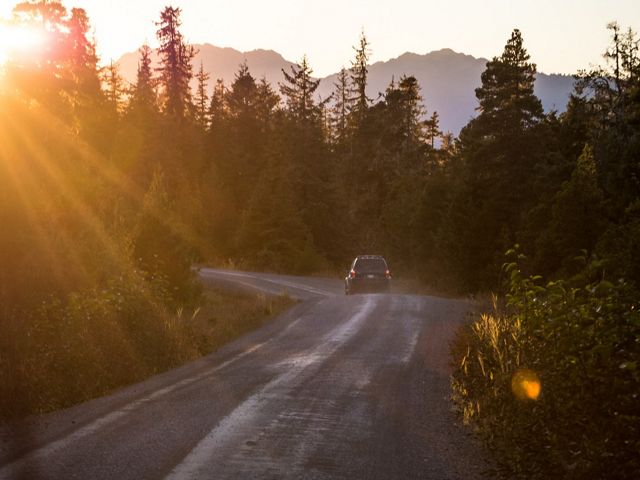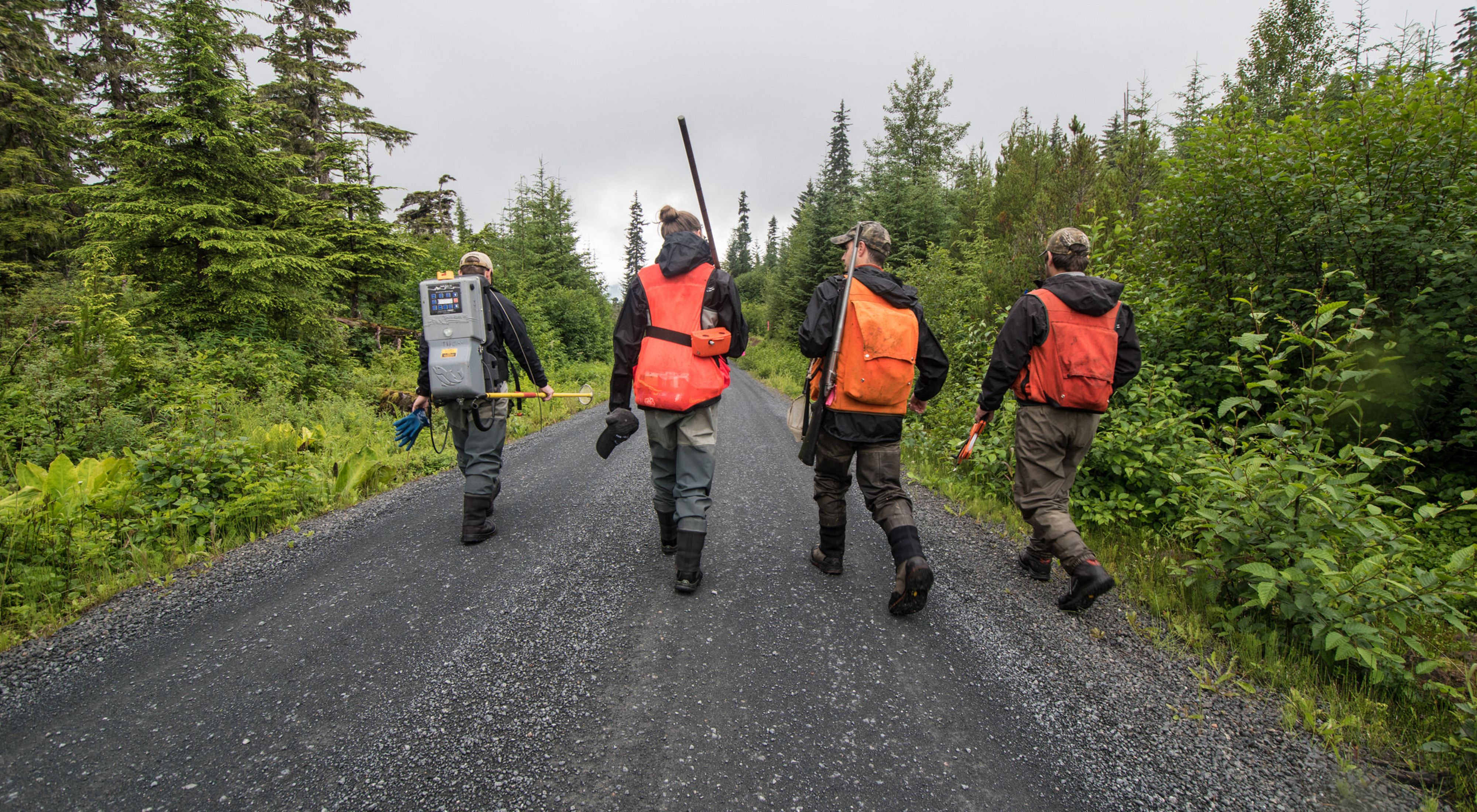Forest for the People
In Alaska's Hoonah Native Forest, a day on the job means working for wild salmon and the future of the forest.
Why This Story
The leadership in Indigenous communities is successfully achieving social and environmental goals. The innovative Hoonah Native Forest Partnership has TNC's support as it restores nature in traditional Tlingit lands for the benefit of wild salmon, deer and the cultural traditions of the next generation.
The things he carries into the woods are the tools of the woodcutter. A chainsaw. Hard hat. Axe. He has on logger’s chaps to protect his legs from a wayward saw blade.
Yet Phillip Sharclane isn’t a logger. His work isn’t so much about trees as it is about wild salmon. And here, at the Tlingit village of Hoonah, Alaska, when you talk about fish you’re talking about people and a food tradition reaching back thousands of years.
“Salmon’s really got a place in my heart,” says the 42-year-old Sharclane.
Salmon Depend on Healthy Forests
In one of nature’s most inspiring journeys, wild salmon return to the streams cascading through this lush rainforest every year. Salmon are tenacious and resilient creatures capable of migrating great distances, but they are not invincible to changes in the waters where they get their start in life. Some streams around Sharclane’s home are showing worrisome signs that date back to an earlier era.
After the heydays of 20th century old-growth logging in Alaska’s Tongass, streams didn’t fare so well. Trees along streams were cut down in some instances, and roads criss-crossed creeks and wetlands. Factors like these led to altered stream beds and fewer safe pools and riffles where young fish can grow bigger before migrating to the sea.
It turns out that restoring a salmon stream in the forest is all about the trees—and, in particular, downed trees that lay in the creek and thereby slow the flow of water.
It’s the damaged places like these where Sharclane and his crew go to make things right, but making things right is hard work. Spasski Creek and its feeder streams drain about 50 square miles of coastal rainforest as it flows to the sea. This is one of about 17,000 salmon streams in the Tongass National Forest of Southeast Alaska. Many of them are relatively small, yet together they produce about a quarter of North America’s wild salmon harvest—so each and every stream is immensely valuable in its own right as well as for the way they contribute to local economies and the way of life.
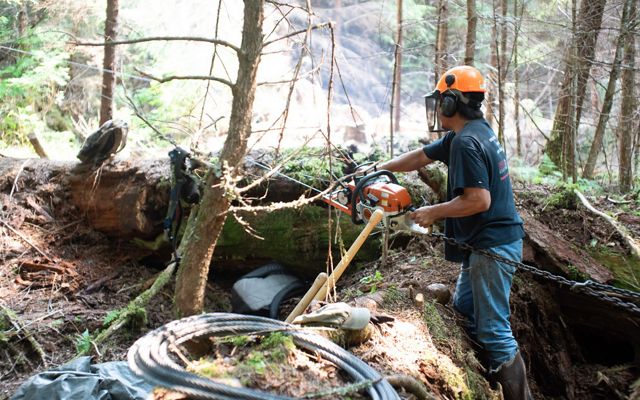

Quote: Hoonah Native Forest Partnership
Ch’u tleix áwé kugaagastee. Let it exist forever.
In a 100-yard section of Spasski Creek, Sharclane and the crew implemented a fix relying only on tools they could carry—such as chainsaws and winches and shovels—to drop two dozen trees into place. With help from the U.S. Forest Service, U.S. Fish and Wildlife Service and The Nature Conservancy, his crew did the tough work of restoring the shape of the creek, making it ready for wild salmon once again.
This calls for the meticulous placement of downed trees in and around streams—just as powerful natural forces like wind and flowing water would ordinarily do in a healthy old-growth forest. A stream’s flowing water pushes and sweeps past downed trees, carving deep pools and swirling eddies that nurture small salmon fry as they grow and mature.
“Now (downed trees) are in the river creating the hydrology for the salmon,” Sharclane says.
Even though wild salmon still swim in the clear water of Spasski Creek, the stream’s fish habitat—pools, riffles and eddies—need help. These parts of the stream have been in a long decline, according to U.S. Forest Service scientist K.K. Prussian.
“What I saw was a channel that probably moved all along its floodplain historically,” Prussian says. “It eventually found a place to kind of dig in its feet. And there weren’t any trees to fall into the creek once it starts digging in.”
Download
-
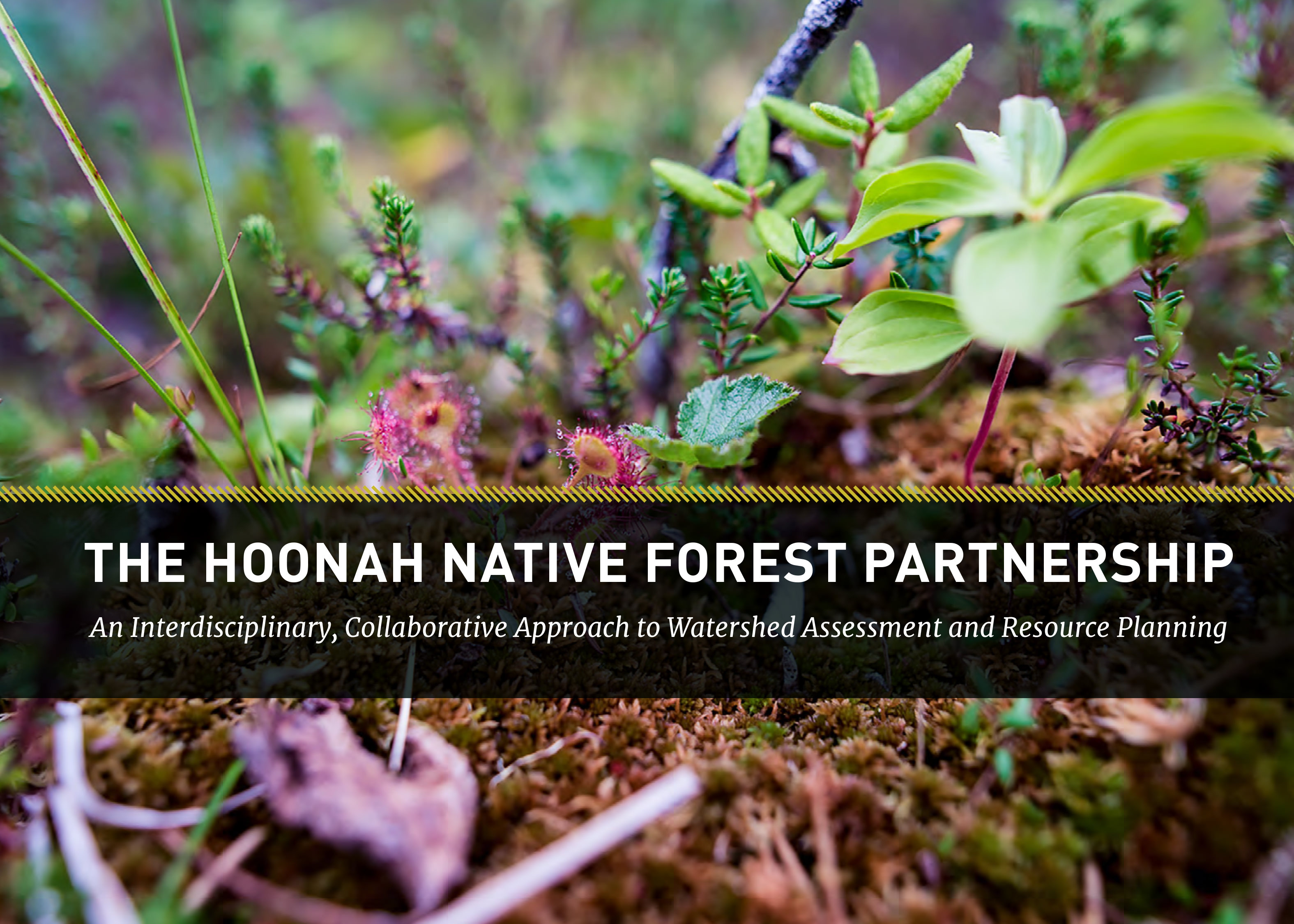 Hoonah Native Forest
Hoonah Native ForestExplore the mission and local culture of a Tlingit village in this beautiful new report from the Hoonah Native Forest Partnership.
DOWNLOAD
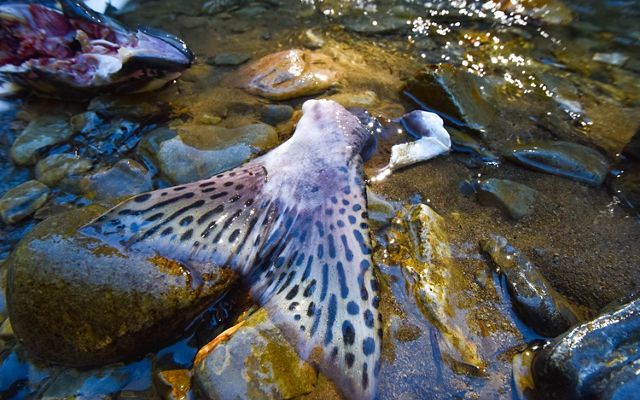
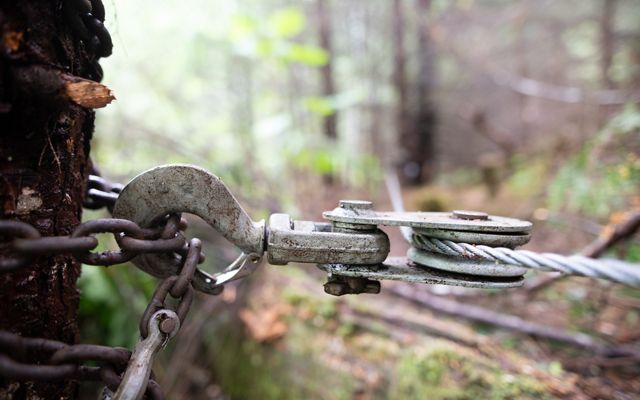
Working Together Makes a Better Future
New commitments and deepening relationships add up to real change in the Tongass.
You Can HelpNative People Caring for a Native Forest
Hoonah lies along the shore at the south edge of Chichagof Island, one of the larger islands in Alaska’s Alexander Archipelago—a place many travelers know as Alaska’s Inside Passage. In Tlingit, it’s known as Haa Aaní: Our Land. Most of Chichagof Island forestlands are managed by the U.S. Forest Service as part of the 17-million-acre Tongass National Forest, which encompasses the vast majority of the Southeast Alaska panhandle. It’s the nation’s largest national forest, and it is the site of a late-20th-century industrial timber industry that supplied two massive pulp mills with millions upon millions of board feet for five decades.
While it lasted, the federally subsidized timber boom in Southeast Alaska put a lot of people to work. But now, the town’s cruise ship dock, zipline outfitter and gift shop are visible signs of how tourism has eclipsed the value of the timber industry both in Hoonah and throughout the Tongass.
As this sector of the local economy grows, there’s something else underway and thriving that isn’t so easy to measure: The traditional way of life in this Tlingit village has continued, even as so much has changed. Deer and salmon and berries are dependable, traditional and cherished wild foods. Taking care of these wild foods is among the short list of ambitious priorities for the Hoonah Native Forest Partnership.
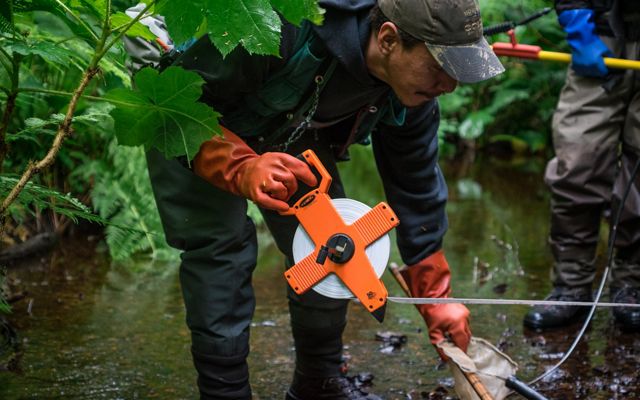
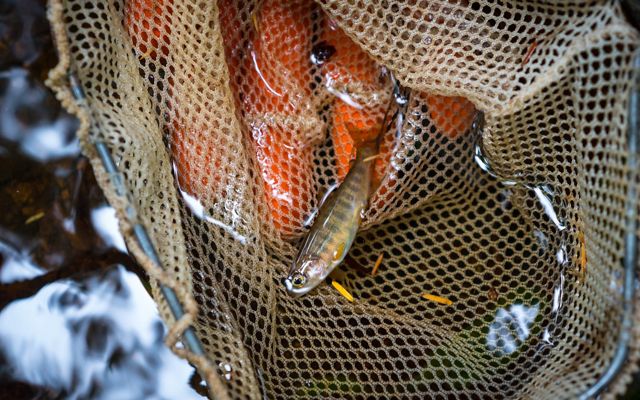
Local Voices for Land and Water
TNC helped to establish the Hoonah Native Forest Partnership in 2015, along with core partners Sealaska, Huna Totem Corp., the Hoonah Indian Association, the City of Hoonah, the Alaska Department of Fish and Game Subsistence Division, and the U.S. Forest Service.
The purpose was to bring science and the voices of the community together to ensure local people have a say in the decisions that shape the 205,000 acres of forests surrounding the village, along with natural resources such as fish in the streams and berries growing on bushes under the forest canopy. Working together leads to learning from one another, and that leads to better decisions—local people have a long history with particular streams and berry patches and that’s valuable knowledge that, paired with Western science, creates a more complete picture of life in the forest.
Reaching decisions about how to use and care for the forest hasn’t always worked this way. For a time, timber units were drawn on the map in distant offices with little regard for local voices. Alaska Native communities were largely left out of that decision-making process, even as some of the logging was conducted on lands belonging to Alaska Native corporations.
In his five years on the field crew of the Hoonah Indian Association, a federally recognized tribe, Sharclane has taken on a variety of projects which have succeeded in assessing and restoring forests using innovative thinning techniques, restoring streams and collecting key data on salmon habitat in the traditional use area of the people of Hoonah.
The tribe is joined in this work by its partners in the innovative Hoonah Native Forest Partnership, all of whom understand that the people of Alaska and the land are connected and have been since time immemorial. Huna Tlingit have cultural roots that are deeply entwined in the land and water surrounding their community. For people like Sharclane, there’s an expectation that a rich way of life awaits the next generation.
“I’ve been really proud of being a part of this project,” he says. “My kiddos are here and pretty soon they’re going to be big enough to be hiking around with me in these woods.”
